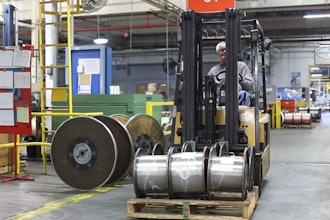
In today's workplace, it's not uncommon to hear employers lament the difficulty of finding reliable workers. Phrases like, "No one wants to work anymore" or "we hire them, but they never show up" can be heard from companies of every size in every industry. But how accurate are these claims? Is the growing shortage of workers and increase in absenteeism really due to a lack of commitment, or is something more complex contributing to these trends?
The financial impact of absenteeism is significant. According to the CDC, businesses in the U.S. lose approximately $225.8 billion each year due to workers not showing up—a loss that averages out to about $1,685 per employee. Industries like manufacturing are particularly affected, only surpassed by healthcare. Finding effective solutions to this issue is becoming increasingly essential for businesses to maintain productivity and stay competitive.
While it's easy to blame workers, my experience tells a different story. In 2017, I founded a peer-to-peer resource-sharing nonprofit that has met over 100,000 needs and continues to meet thousands more each year. In that timeframe, I have personally reviewed no fewer than 140,000 requests for help. I can confidently say that at least 30% of the help requests that my team and I see directly correlate with people trying to find, keep, or get to work.
The reality is that many employees aren't missing work because they lack the desire to be there. Instead, they're facing obstacles that could be easily and inexpensively resolved, but they do not have the resources to do so. Common reasons for absenteeism—like not having gas money, dealing with a utility shutoff, a repossessed vehicle, or being unable to afford required workwear—often stem from financial hardships or unexpected circumstances. This is especially true for those re-entering the workforce after a gap in employment. A common misconception and overlooked reality is that just because someone got the job doesn't mean they can get to the job.
The average cost to remove these barriers is around $350—a negligible amount compared to the cost of replacing a lost worker. Yet, because employers don't know there is an issue and employees are embarrassed or afraid to ask for help, everybody loses.
For the past eight years, I've seen employers lose staff who wanted to work over solvable problems like a flat tire or a pair of appropriate shoes. Employees desperate to work often lose their jobs because they lack the resources to overcome their hurdles. Ironically, these same employers sometimes donate large sums to nonprofit organizations, aiming to help the broader community while unintentionally overlooking the needs of their own employees.
They say necessity is the mother of invention, and it rings particularly true for creating HelpLink. Recognizing this disconnect led me to create a free-to-use tech platform designed specifically to bridge the gap between employers and the needs of their employees. HelpLink was created to solve the very problem I witnessed so intimately in my nonprofit work. It allows companies to proactively address work-related barriers that their employees face, reducing absenteeism and increasing retention, all while keeping operations running smoothly.
HelpLink connects employees in need with nonprofits and companies willing to help. When an employee encounters a barrier, such as transportation issues or unexpected expenses, they can request help through HelpLink. The platform then matches these needs with a sponsoring nonprofit, and companies can contribute to these needs through tax-deductible donations, which are automatically allocated based on the company's giving profile. Once the funds are raised, HelpLink directly addresses the employee's needs, ensuring they can continue to work without disruption.
Setting up HelpLink is simple and takes about 10 minutes. Once in place, you can start onboarding employees and directly addressing the barriers that prevent them from coming to work. This proactive approach supports your workforce and strengthens your company by reducing absenteeism, improving retention, and fostering a more engaged workforce.
As employers, it's crucial to look beyond the surface and address the real issues that keep employees from showing up. By understanding the underlying causes of absenteeism and taking proactive steps to support your workforce, you can not only reduce these costly disruptions but also build a more engaged and committed team. Embracing innovative solutions like HelpLink is vital to mitigating these problems. As the world evolves, companies must be open to new ways of solving old problems. What worked in the past may no longer be effective, but by leveraging modern tools and creative approaches, businesses can save time, money, and resources while ensuring their employees have the support they need.
After all, the success of any business depends on its people—ensuring they have the support they need is key to keeping your operations running smoothly. In an era where the workplace is constantly evolving, HelpLink offers a practical, impactful solution that benefits both your employees and your bottom line.
Abagail McKiernan is a two-time business founder dedicated to strengthening communities and workplaces by leveraging technology to foster meaningful connections and relationships. She can be reached at [email protected], and for more information, visit https://helplink.org/businesses.






















